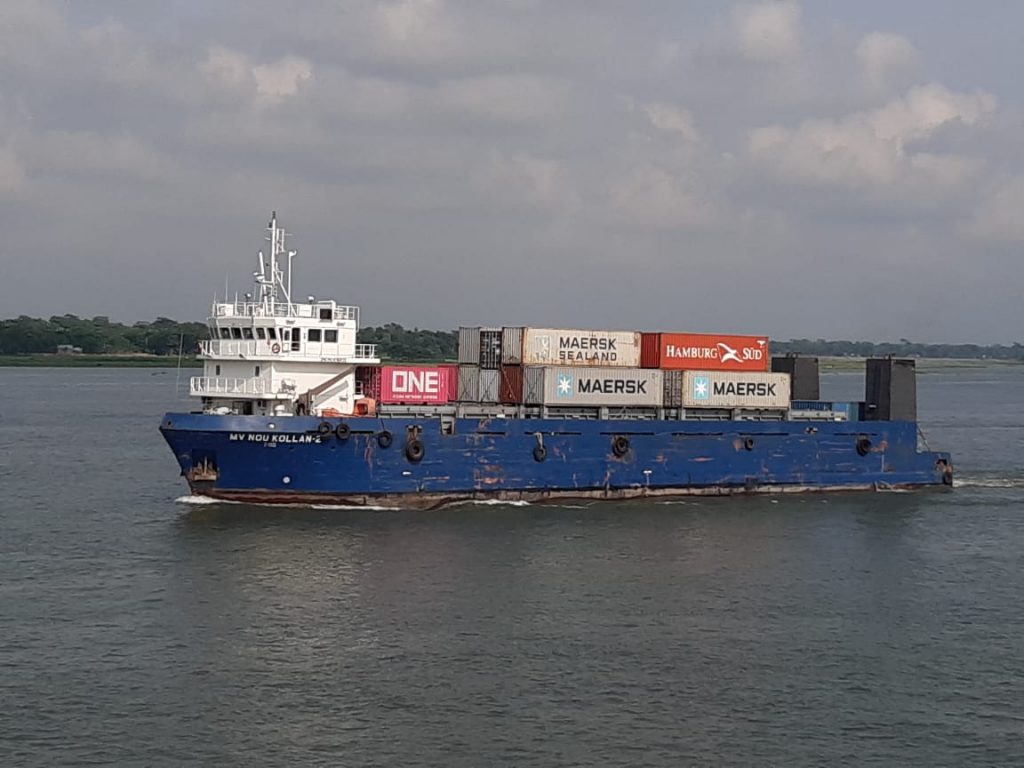
Container ship service set to begin between Mongla and Chattogram ports
DHAKA : In a significant development aimed at reducing export costs and enhancing trade accessibility in the greater Khulna region, container ships are expected to start operating between Mongla and Chattogram ports on a domestic maritime route from April.
This initiative marks a strategic move to revitalise Mongla Port—Bangladesh’s second seaport—which, after years of grappling with numerous challenges, has now emerged as a profitable and growing hub due to several ongoing development and expansion projects.
The surge in commercial vessel arrivals has not only increased the port’s revenue but also generated new employment opportunities for local workers.
Despite this progress, Mongla Port continues to face a number of challenges, including navigability issues, underutilisation of existing business facilities and high operational costs.
These limitations have restricted container ship movement to roughly one vessel per month, despite the region’s strong export potential for goods such as fish, frozen products, and jute.
Syed Zahid Hossain, President of the Mongla Port Berth and Ship Operator Association, highlighted the core issue affecting operations.
“Container imports through Mongla are minimal,” he said.
“As a result, there’s a shortage of empty containers here. Bringing them in from Chattogram incurs additional charges, making the overall cost of containers higher. If container ships start operating on the Chattogram-Mongla route, both time and export expenses will be significantly reduced,” Zahid Hossain said.
In response to this opportunity, Chattogram-based shipping agent Sea Glory has taken the initiative to operate small container vessels along this domestic route.
Their plan involves transporting empty containers from Chattogram to Mongla, where they will be filled with export goods and sent back via Chattogram for international shipping.
Mainul Hossain, Manager of Sea Glory Shipping, said, “If we are treated as a feeder service, the process becomes more complicated. But if we can operate like the Pangaon model—moving empty containers from Chattogram to Mongla—the procedures become easier and the business more viable.”
He said the company had already conducted a successful trial run in February, transporting 100 TEUs (around 70 containers) along the route. Following this, they plan to officially commence regular container transportation from mid-April.
The containers will primarily carry fish, frozen goods, and jute for export via Chattogram.
Direct transshipment from Mongla remains expensive and time-consuming due to limited container activity. In contrast, using Chattogram as an intermediary promises to be faster and more cost-effective.
Omar Faruk, Secretary of the Chattogram Port Authority, acknowledged the challenges Mongla faces in accommodating larger ships due to draft limitations.
“In such cases, cargo can be rerouted through Chattogram,” he said. “If there is a container shortage in Mongla, we can meet shipping agents’ needs by facilitating exports through Chattogram.”
Captain Rafiqul Islam, Chairman of the Bangladesh Shipping Agents Association in Khulna, emphasised the importance of cooperation between both ports.
“We are unable to export goods regularly due to this shortage. Both ports need to take a flexible approach to resolve this. Though the operation is within the country, importers and those running vessels on this route should be offered special incentives to make the service sustainable,” he said.
Rear Admiral Shaheen Rahman, Chairman of the Mongla Port Authority, added, “Mongla is now more dynamic and promising than ever. Alongside infrastructure development, we are expanding the port’s capacity. Once current projects are completed, they will significantly boost the local economy. We’ve also enhanced all facilities to increase import and export volume.”
The start of container transport operations between Chattogram and Mongla is expected to contribute positively to the national economy, opening up more efficient and affordable trade routes for exporters and importers alike.
